Aventura Magazine
Miami’s Architecture is On the Rise
February 2022
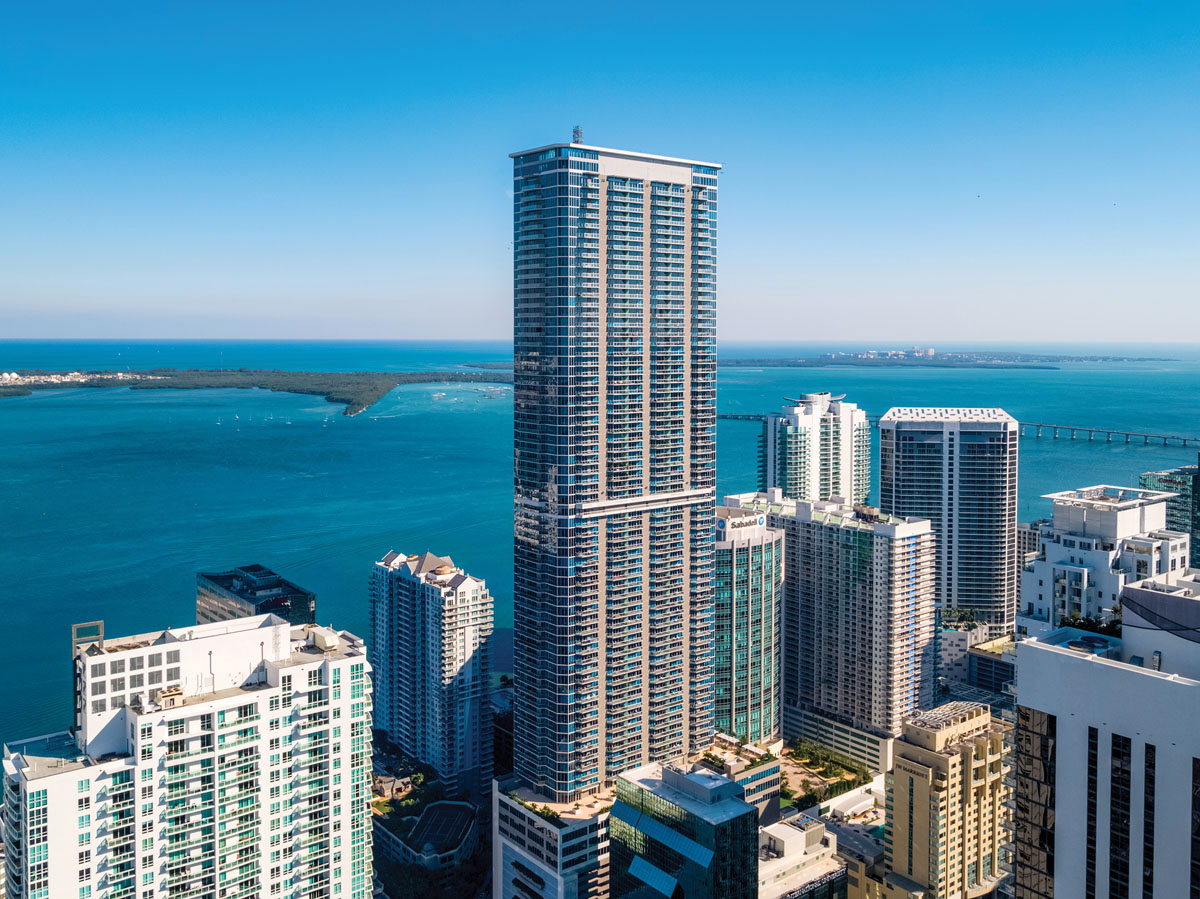 The Panorama Tower in Brickell is currently Florida’s tallest building.
The Panorama Tower in Brickell is currently Florida’s tallest building.
Take a look around and the Miami building boom is obvious: New construction projects litter the skyline, and the ongoing joke is that Florida will soon announce the construction crane as its new state bird. “I’ve been doing this for a long time—40 years—and I’ve never seen [growth] like this,” says Charles Sieger, principal with Sieger Suárez Architects in Miami. “It’s interesting because Miami is very flat. People go to Colorado for mountains, but these buildings are our mountains. If you want a view, you’ve got to be in one of these high-rise buildings. If you want the long-distance views, you have to go up.”
Miami boasts the country’s third-largest skyline (behind New York City and Chicago). At present, Florida’s tallest building is the 85-story residential Panorama Tower in Brickell. Built in 2018 by developer Florida East Coast Realty, Panorama Tower reaches 868 feet and is, in fact, the tallest residential tower south of New York. And while few currently compare, a healthy crop of newcomers is shooting upward—featuring amenities like private elevators, high ceilings, open floor plans, and expansive outdoor terraces.
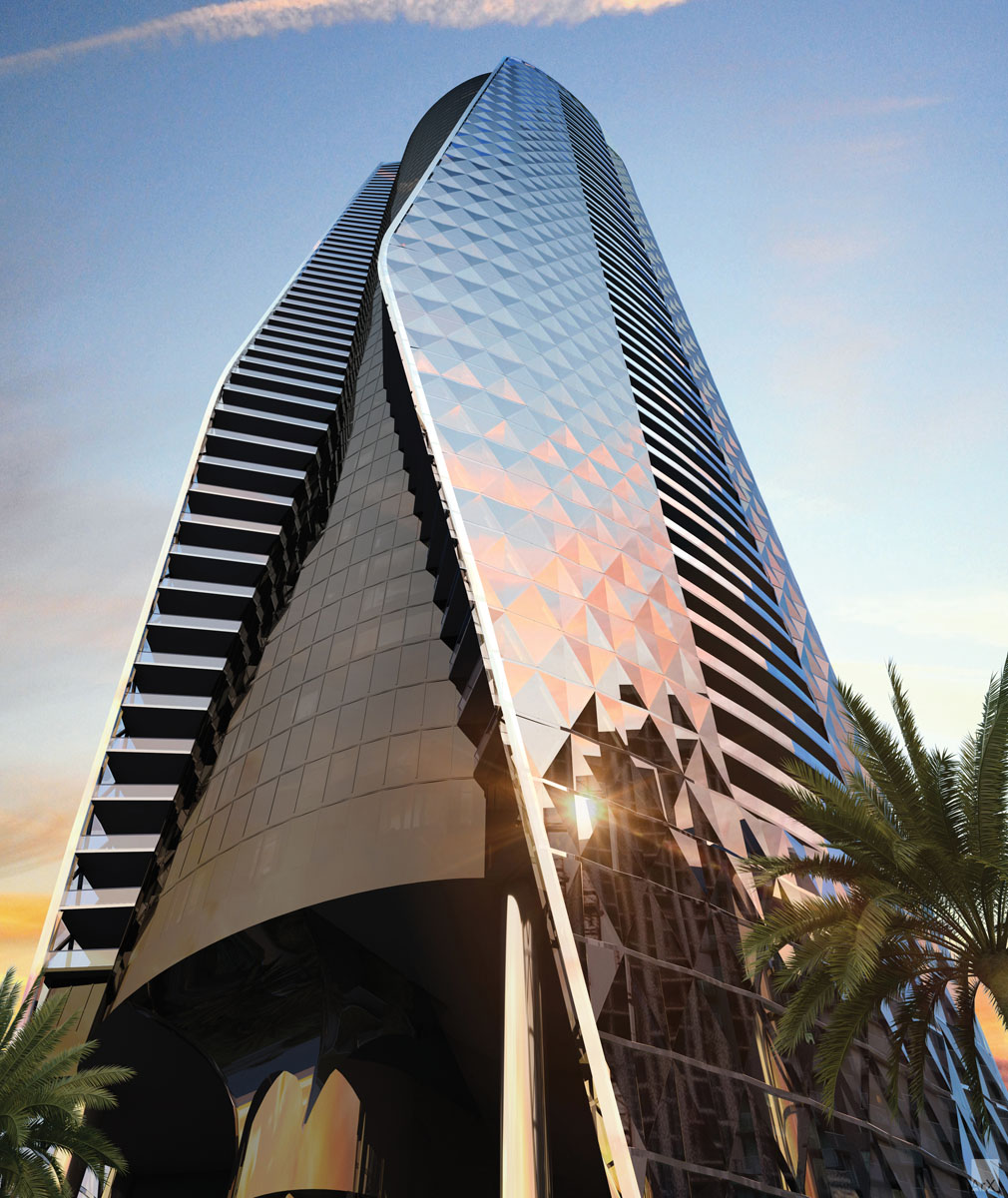 The Bentley Residences will be the tallest residential tower on a U.S. beachfront. Photo courtesy of Bentley Residences
The Bentley Residences will be the tallest residential tower on a U.S. beachfront. Photo courtesy of Bentley Residences
Going Big
Consider just a few of these impressive market entries: When it’s completed in 2024, the 62-story Aria Reserve condo towers in Miami’s Edgewater neighborhood will claim the title of the tallest residential waterfront tower pair in the U.S. Now under construction, the 48-story Five Park is expected to be Miami Beach’s tallest residential condo tower. Just 10 or so miles north in Sunny Isles Beach, The Bentley Residences will stand at 749 feet tall and more than 60 stories, making it the tallest residential tower on a U.S. beachfront. And talk about prestige—buy into the building and even your car will get to experience new heights, since each unit features a car elevator that delivers your ride to a private, in-unit, multicar garage. “The core of the building is essentially the elevator, and [the] outer perimeter is the parking space,” says Sieger, whose firm designed the building. “It creates apartments that have tremendous views and frontage as it wraps around the elevator.”
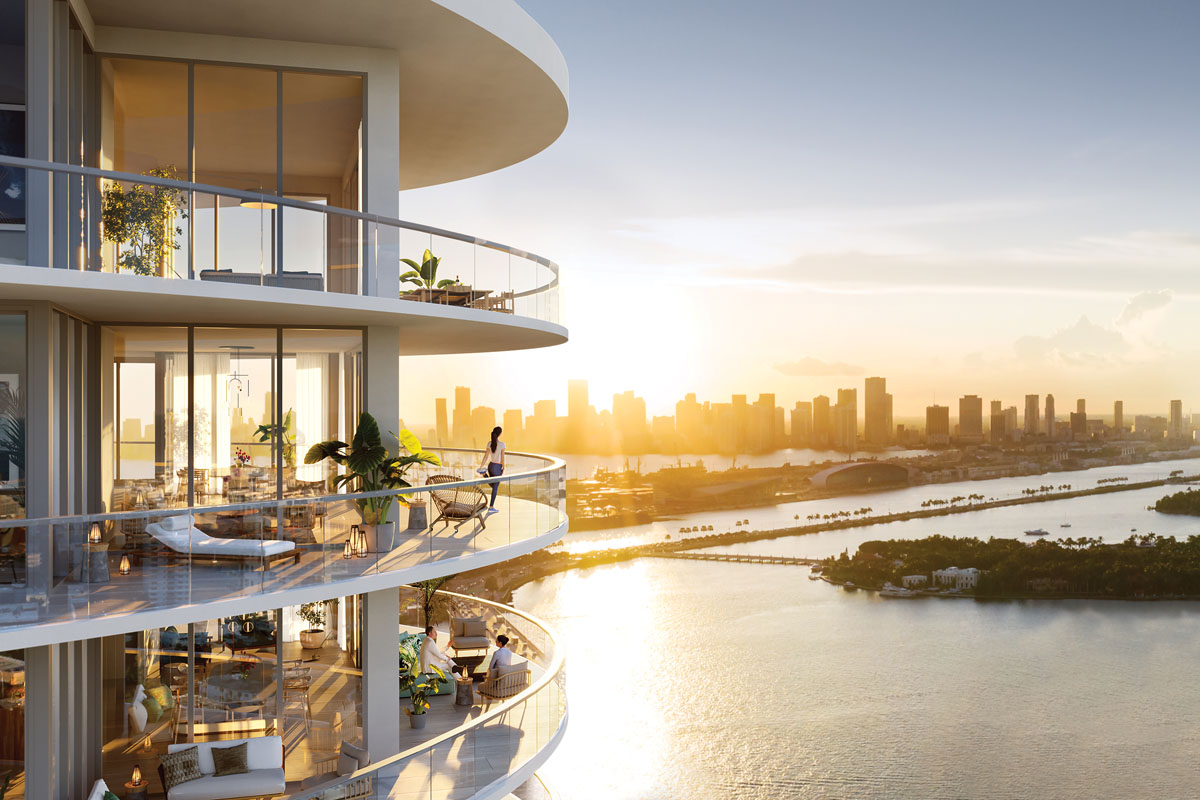 Renderings of Five Park, which is set to debut on Miami Beach. Photo courtesy of Five Park
Renderings of Five Park, which is set to debut on Miami Beach. Photo courtesy of Five Park
On the Lowdown
Destined for Bay Harbor Islands, La Baia is one of the few low-rise buildings designed to stick close to the ground. “The norm for new development is a high-rise building, which is great for views, but it actually puts you farther away from the water,” explains Luis O. Revuelta, principal at AIA of Revuelta Architecture, the firm behind the design of La Baia. “Horizontality is…designed to make each unit in the building feel connected to the bay, the sea breeze, the ripples of the water, and the sound of the waves as boats pass by.”
Aesthetically, architecture is becoming more contemporary and reflective of the times. Buildings offer an effortless indoor/outdoor or “tropical modern” living experience, as Adam Mopsick, CEO of Amicon, a vertically integrated real estate and construction services firm, defines it.
“Every site, every developer, every municipality’s zoning code, all of these things are what I let be the most influential elements,” says Revuelta. “Every project carries its own DNA. We think of our building designs as ‘bespoke suits’ made to fit the highest and best use of each project.”
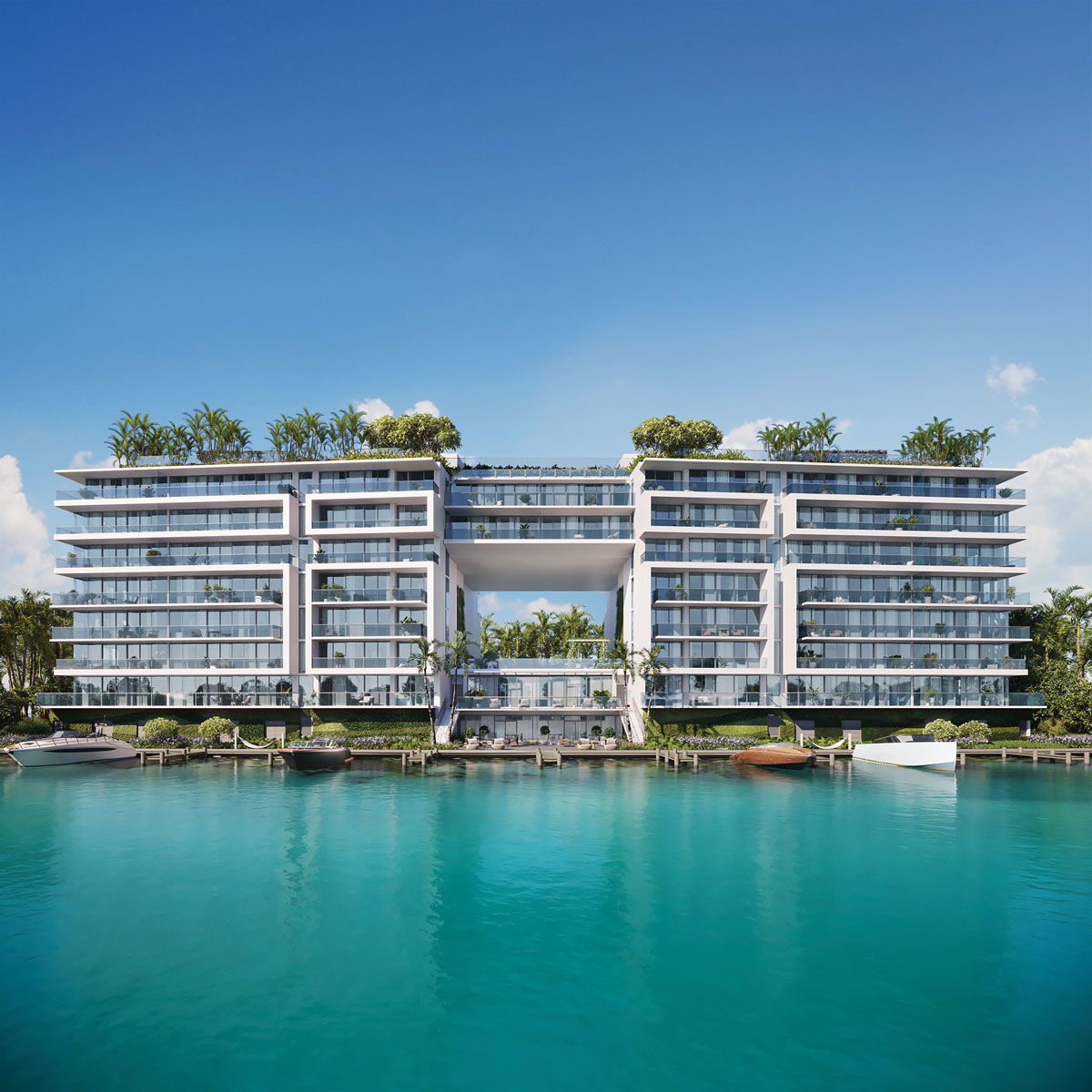 Renderings of La Baia, which will be located in Bay Harbor Islands.
Renderings of La Baia, which will be located in Bay Harbor Islands.
Rising Waters
As the Magic City skyline grows, the rising sea level becomes a more precarious environmental constraint with a long-term impact. The National Oceanic and Atmospheric Administration projects 5 to 8.2 feet of mean sea level rise globally by 2100. That could mean an increase of 2 feet as early as 2046 and 3 feet by 2059.
“Developers or engineers [who] want to build in the coastal zone tend to look at future sea level rise forecasts and pick out the lowest one they can get away with,” says Harold Wanless, PhD, a professor of geography and sustainable development at the University of Miami. “If we are going to have 2 feet this century, then [developers and engineers] can do all sorts of things to protect [residents]. If, on the other hand, we’re going to have 6 to 8 to 10 feet of sea level rise, then there’s not much they can do. The problem is high-rise development is very lucrative. It’s a great way to make a living and without liability strings attached. Everything looks lovely right now as long are you aren’t there during a high tide or storm surge.”
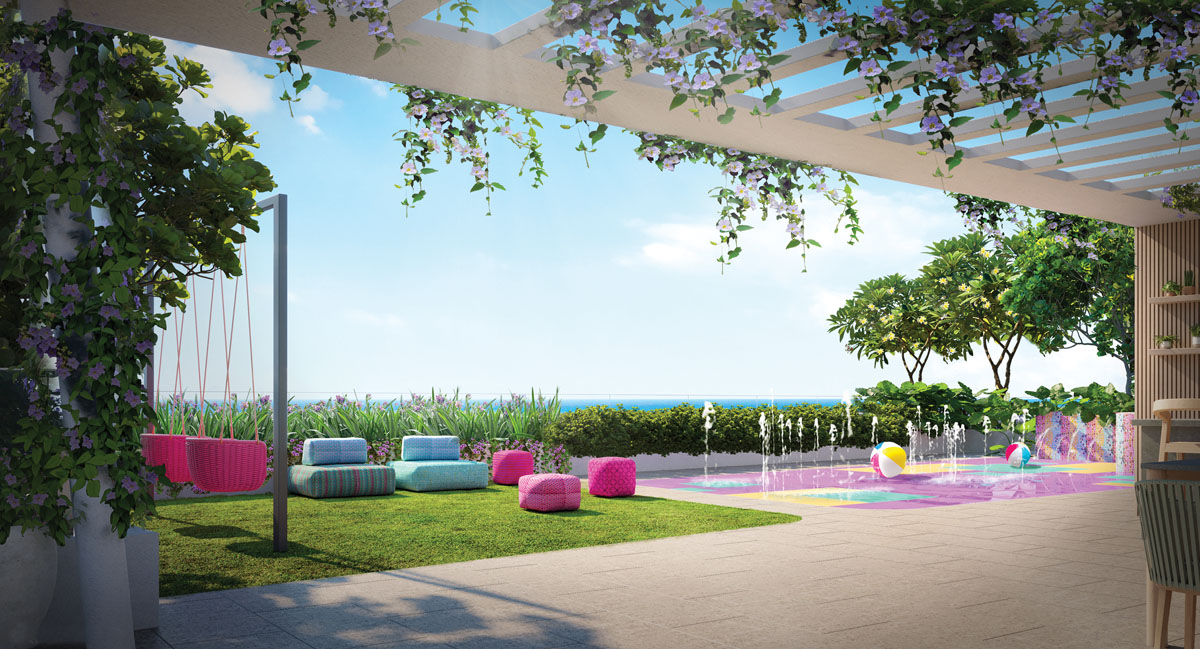 Rendering of La Baia
Rendering of La Baia
One of the solutions to prepare for our watery future is a revision of statewide building codes. “Officials are pressing more on developers to install flood barriers in areas that were not previously in flood zones but now are in areas where flooding can occur due to sea levels rising,” says Mopsick.
Innovative building materials are also allowing construction companies to address the threat of rising water. One example is replacing steel rebar with glass fiber, which has equal strength, less weight, a lower carbon footprint, and less chance of corrosion. “All very important factors in the South Florida coastal market,” Mopsick adds.
![]() A residential home in Bal Harbour by Amicon, a vertically integrated real estate and construction services firm.
A residential home in Bal Harbour by Amicon, a vertically integrated real estate and construction services firm.
Tony Cho’s Future of Cities, a real estate investment platform, think tank, and venture ecosystem, is aiming to address environmental concerns—as well as social and economic issues—by using design solutions to connect people to nature. “People want projects that are equitable, create opportunity for the local community, and are good for the environment,” says Cho.
But, he admits, two factors are impacting progress. “First, buildings are built to code. If the code changes, buildings will change. Second, until incentives to use sustainable practices and materials are made greater, a developer must be willing, in many cases, to take less profit to build for a greater good.”
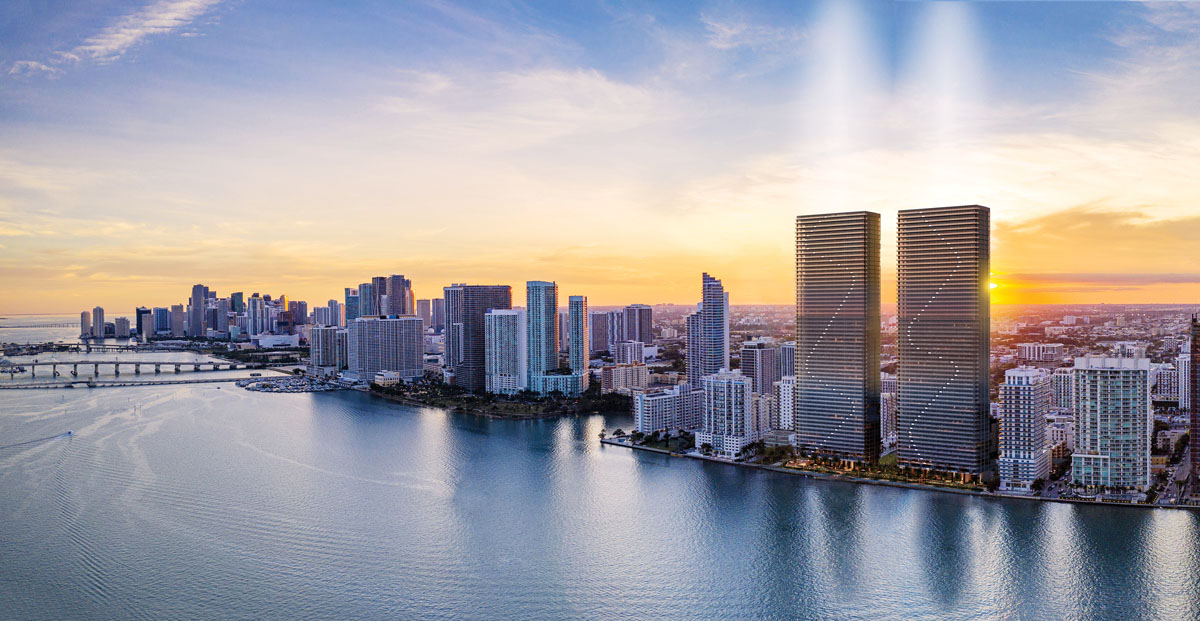 Aria Reserve Miami’s towers will add to the city’s skyline evolution. Photo courtesy of Aria Reserve Miami
Aria Reserve Miami’s towers will add to the city’s skyline evolution. Photo courtesy of Aria Reserve Miami
Post-Surfside Safety
Mopsick points to recent administrative changes that the state of Florida is implementing and promoting in order to increase the transparency and frequency of condo building inspections—especially in aging buildings along the coastline. Look no further than the collapse of the Champlain Towers in Surfside last summer to bring the critical nature of those changes into tragically sharp focus.
William Sklar, a condominium lawyer in West Palm Beach, is chairman of a Florida Bar task force that has proposed changes to condo laws to the governor and other legislative leaders following the Surfside collapse. According to Sklar, 1.5 million condos in Florida are more than 30 years old—comprising a frightening 60 percent of the market. Sklar says the task force’s recommendations focus on transparency, financial reserves, inspections, and maintenance.
Updated building codes and environmental constraints are challenging the construction industry to develop novel ways to design and build to fulfill demand and ensure safety. “Mixed-used developments, live-work lofts, generational housing, shipping container conversions, in-fill, and transit-oriented development are all a result of changes in conditions,” says Mopsick. “The last year’s challenges have propelled design to be geared toward functionality and connectivity [rather] than purely aesthetic design.”
